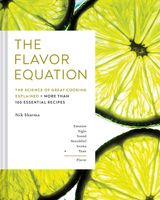Advertisement
How Savoriness Works
Appears in
By Nik Sharma
Published 2020
Several substances in our food create the taste of umami or savoriness. Aging and fermentation also help increase the concentration of these savory-tasting molecules (think: cheese and soy sauce). These substances are usually amino acids such as glutamate and nucleotides, which are a part of our nucleic acids; for example, DNA and RNA. Glutamate in our diet acts as an energy source and gets metabolized by the body to synthesize various other substances that it needs to function. At present, there are several candidates that might function as umami taste receptors. Based on experimental studies, some of these receptors respond to only glutamate; others respond to both glutamate and the nucleotides.

